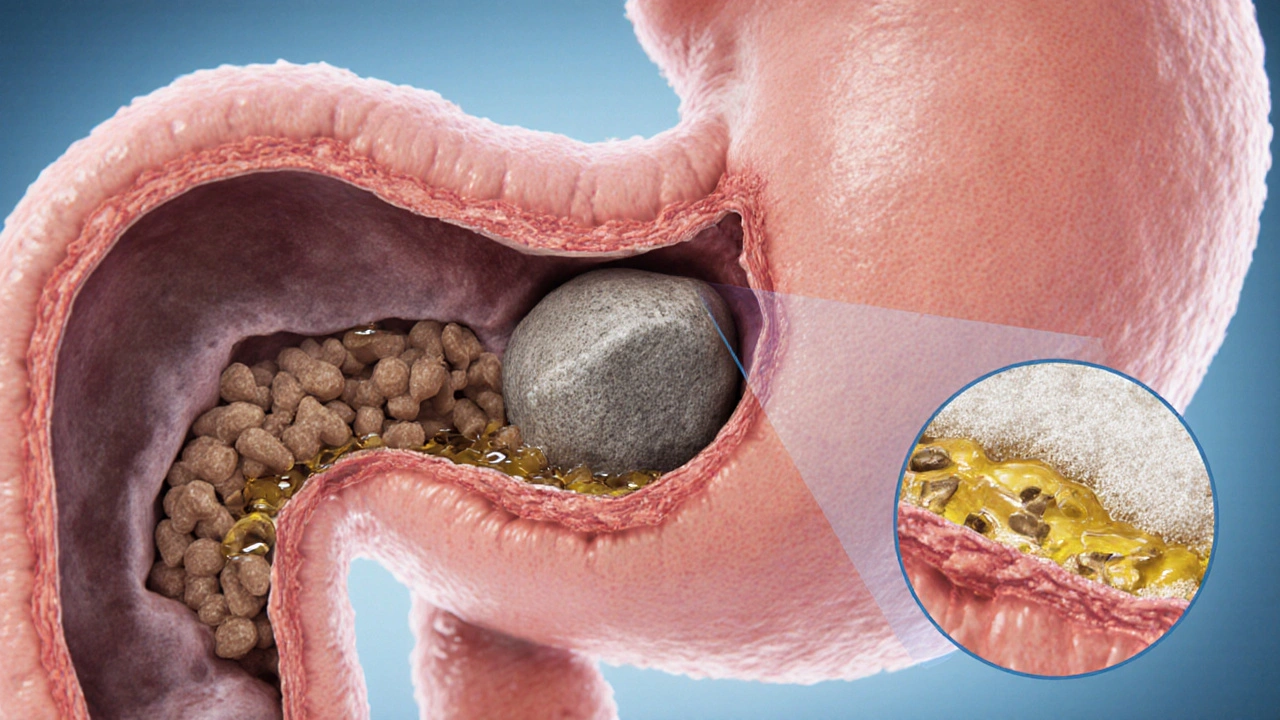Pancreatic Duct Blockage: Causes, Symptoms, and Treatment Options
When dealing with pancreatic duct blockage, a condition where the main channel that carries digestive enzymes from the pancreas to the small intestine becomes obstructed. Also known as pancreatic duct obstruction, it can trigger a cascade of digestive problems and intense pain. Understanding how this blockage forms and what it does to the body helps you spot warning signs early and choose the right care path.
Key Players Behind the Blockage
The most common culprits are gallstones, solid deposits that form in the gallbladder and can travel into the pancreatic duct and pancreatitis, inflammation of the pancreas that often results from a blocked duct. When a stone lodges, it creates pressure that backs up enzyme flow, which can inflame the pancreas and lead to acute or chronic pancreatitis. Another vital tool in diagnosis and relief is ERCP, endoscopic retrograde cholangiopancreatography, a minimally invasive procedure that visualizes and can clear the blockage. These three entities—gallstones, pancreatitis, and ERCP—form a tight network: gallstones often cause blockage, blockage triggers pancreatitis, and ERCP can both diagnose and treat the issue.
Beyond the immediate cause, the body responds with a drop in enzyme delivery, which means fats and proteins aren’t broken down properly. This leads to greasy stools, bloating, and weight loss. Over time, chronic blockage can scar pancreatic tissue, reducing its ability to produce insulin and increasing the risk of diabetes. Recognizing these downstream effects early can prevent long‑term complications.
Imaging studies are the cornerstone of diagnosis. An abdominal ultrasound quickly spots gallstones, while a contrast‑enhanced CT scan highlights duct dilation and inflammation. When a blockage is suspected but not confirmed, doctors often turn to ERCP not just for imaging but also for therapeutic intervention—removing stones, placing stents, or dilating strictures. Stents keep the duct open while the underlying cause heals, reducing pressure and pain.
Once the blockage is cleared, many patients benefit from pancreatic enzyme replacement therapy (PERT). This supplemental approach supplies the missing enzymes, allowing the gut to digest food normally and reducing steatorrhea. Dosage is individualized based on the severity of the enzyme deficit and the patient’s diet. Alongside PERT, lifestyle changes—low‑fat meals, adequate hydration, and avoiding alcohol—support recovery and lower the chance of recurrence.
Medication management also plays a role. Pain control often involves non‑opioid analgesics, while severe cases may need short courses of steroids to reduce inflammation. In chronic pancreatitis, doctors may prescribe antioxidants or low‑dose pancreatic enzyme formulations to slow disease progression. Regular follow‑ups are essential to monitor enzyme levels, blood sugar, and any signs of new blockage.
Below you’ll find a curated list of articles covering everything from how to spot the first signs of a blocked pancreatic duct to detailed guides on ERCP, enzyme therapy, and lifestyle adjustments. Whether you’re a patient, a caregiver, or just curious about digestive health, the resources ahead will give you practical steps and clear explanations to manage pancreatic duct blockage effectively.

